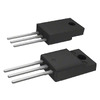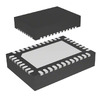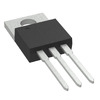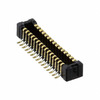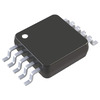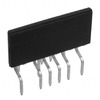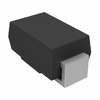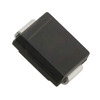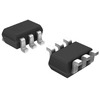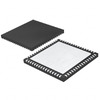LM555 Timer: Pinout, Features, and Datasheet
This article is all about the LM555 timer, a popular and powerful little chip used in electronics. Known for its flexibility, the LM555 can create accurate time delays and make things pulse on and off. We’ll go over its pin layout, basic specs, and the different ways it can be used like in one-shot (monostable) mode and continuous (astable) mode. You'll see why this tiny chip is such a big deal in all kinds of electronic projects, from simple beginner builds to more advanced circuits.Catalog
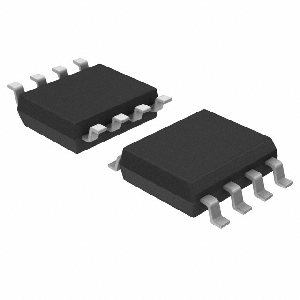
What is the LM555 Timer?
The LM555 timer is known for its impressive precision and flexibility in timing applications. It’s commonly used in two main modes. In monostable mode, the timer produces a single, timed pulse when triggered. This timing interval is set by connecting an external resistor and capacitor, allowing for precise control of delays. Monostable mode is often used in circuits that rely on exact timing, like pulse-width modulators or delay timers. In astable mode, the LM555 creates a continuous series of pulses, or square waves. Here, two resistors and a capacitor work together to adjust the frequency and duty cycle of these oscillations. This mode is ideal for applications that need a steady, repeating signal, such as LED flashers, tone generators, or clock pulses. Many favor the LM555 for its reliability and ease of use in a wide range of circuit designs. The LM555 bridges simple and complex projects, enabling a broad range of possibilities with minimal adjustments.
LM555 Equivalents
• LM556
• SE555
• NE555
LM555 Pin Configuration

LM555 Symbol, Footprint, and CAD Model
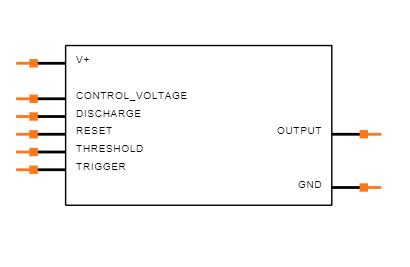

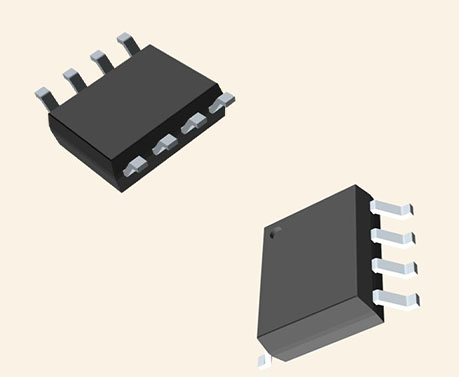
Features of the LM555
• Versatile Timing Control: Capable of managing timing durations from microseconds to hours, with dual modes (astable and monostable) for generating pulses or oscillations.
• Adjustable Duty Cycle: Flexible duty cycle adjustment allows precise control over pulse widths, useful for clock signals, LED modulation, and more.
• High Output Power: Can source or sink up to 200 mA, providing strong output without needing extra amplification, which simplifies circuit design.
• Temperature Stability: Maintains reliable performance across varying temperatures, ideal for automotive and industrial applications requiring timing precision.
• TTL Compatibility: Works seamlessly with TTL components, making it easy to integrate into existing designs with minimal modifications.
• Compact Design: Available in an 8-pin package, with options for normally on or off outputs, suitable for space-limited layouts in electronics.
Applications of the LM555
Precision Timing and Sequencing
The LM555 excels in tasks involving precision timing and sequencing, making it invaluable for devices requiring precise time intervals. It finds applications in metronomes, musical instruments, and workout timers. In fitness equipment, its timing accuracy contributes to consistent workout session. By tweaking components, you can delve into the intricate relationship between time constants and circuit behavior, which uncovers insights into managing timing precision.
Pulse Width and Position Modulation
In pulse width and position modulation, the LM555 simplifies the design and implementation process, playing a role in various electronic projects. It is widely used in motor speed controllers and light dimmers, where modulation control boosts device utility and energy efficiency. Observing how this control affects motor performance can reveal its impact on smooth operation and power conservation. Additionally, working with systems that require modulation allows for a deeper comprehension of the delicate balance between power and performance.
Delay Generation
Delay generation is another application of the LM555, providing temporal control in numerous contexts. It plays an important part in industrial automation systems, ensuring processes occur with precise timing to uphold safety and operational efficiency. Practically speaking, configuring these delays often involves experimentation to achieve the best settings, granting practical insights into timing adjustments based on process demands.
Linear Ramp Generation
The LM555’s proficiency in generating linear ramps is invaluable in analog voltage control scenarios, frequently employed in waveform generators and signal conditioning circuits. Through experimenting with linear ramp applications, others may stumble upon novel ways to measure and adjust voltage changes smoothly. This knowledge benefits systems reliant on steady signal transitions, such as analog-to-digital converters.
Functional Block Diagram of the LM555
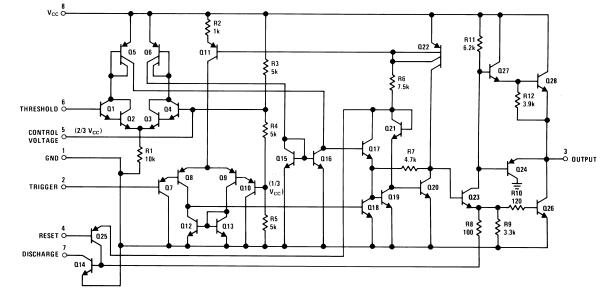
Alternative Models for the LM555
|
Part Number |
Manufacturer |
Package / Case |
Number of Pins |
Quiescent Current |
Low Level Output Current |
Frequency |
Supply Voltage |
Moisture Sensitivity Level
(MSL) |
Operating Supply Current |
|
LM555CM |
Texas Instruments |
8-SOIC (0.154, 3.90mm Width) |
8 |
3 mA |
200 mA |
100 kHz |
5 V |
1 (Unlimited) |
10 mA |
|
LM555CMX |
Texas Instruments |
8-SOIC (0.154, 3.90mm Width) |
8 |
3 mA |
200 mA |
100 kHz |
5 V |
1 (Unlimited) |
10 mA |
|
LM555CMX/NOPB |
Texas Instruments |
8-SOIC (0.154, 3.90mm Width) |
8 |
3 mA |
200 mA |
100 kHz |
5 V |
1 (Unlimited) |
10 mA |
|
LM555CM/NOPB |
Texas Instruments |
8-SOIC (0.154, 3.90mm Width) |
8 |
3 mA |
200 mA |
100 kHz |
5 V |
1 (Unlimited) |
10 mA |
|
MC1455BDR2G |
ON Semiconductor |
8-SOIC (0.154, 3.90mm Width) |
8 |
15 mA |
200 mA |
- |
5 V |
1 (Unlimited) |
10 mA |
LM555 Timer for Timing and Pulsing Applications
The LM555 timer is cherished for its role in crafting precise timing and pulse generation circuit. It operates in two primary modes: monostable and astable. Each mode exhibits unique characteristics, making them suitable for various applications.
Monostable Mode: Singular Pulse Events
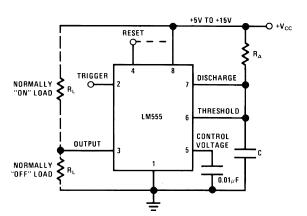
In monostable mode, the LM555 is adept at producing a single pulse of predetermined duration. This process is initiated by an external voltage signal, which sets off a discharge cycle for the attached capacitor. The pulse duration can be finely tuned by selecting specific resistor and capacitor values, a practice common who delight in achieving precise time intervals for their projects. This finds application in devices like timers, pulse-width modulation controls, and delay circuits.
Astable Mode: Continuous Waveform Generation
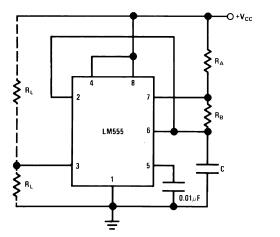
In astable mode, the LM555 skillfully generates continuous square wave outputs by allowing the capacitor to cyclically recharge and discharge between defined voltage thresholds. This results in an autonomous oscillation, which is invaluable for applications such as clock signals, LED light flashers, and tone generators. Adjusting resistor and capacitor values enables one to manipulate the output waveform's frequency and duty cycle. This tuning process often involves a delicate balance of knowledge and perception to achieve desired results, especially in systems demanding consistent timing and stability.
Dimensions for LM555
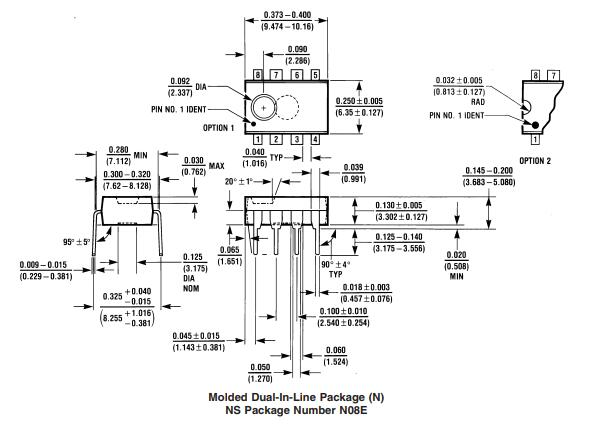
LM555 Manufacturer Information
Emerging from the transformation of Geophysical Service Incorporated in 1951, Texas Instruments has established a prominent presence in the semiconductor sector. The company has left a mark through its impressive work with analog chips and processors. The fact that TI generates a substantial portion of its revenue over 80%, from these innovations reflects its strategic direction and deep industry insight. Texas Instruments has been at the forefront of analog technology, following a relentless path of innovation aimed at maximizing the efficiency of devices. By leaning deeply into research and development, TI has enhanced the processing capabilities of analog chips, tailoring them to the complex requirements of current electronic applications. Texas Instruments serves as a testament to the power of focused expertise and strategic vision in navigating a company to the vanguard of technological advancement, thereby reshaping the landscape of semiconductor technologies.
Datasheet PDF
LM555CM Datasheets:
LM555CMX Datasheets:
MC1455BDR2G Datasheets:
Material Declaration MC1455BDR2G.pdf
About us
ALLELCO LIMITED
Read more
Quick inquiry
Please send an inquiry, we will respond immediately.
Frequently Asked Questions [FAQ]
1. How many pins does LM555 have?
The LM555 timer, housed in a common DIP package, comprises eight distinct pins: ground, voltage supply, threshold, trigger, discharge, control voltage, reset, and output. This setup enhances its reliability and adaptability across a spectrum of engineering applications. Each pin serves a unique purpose in circuit design, demanding careful consideration. Notably, the reset pin, often underestimated, offers unique advantages in designing circuits needing rapid reinitialization.
2. What is LM555 Monostable Mode?
In its monostable configuration, the LM555 generates a singular, controlled output pulse for a predetermined duration, often termed a one-shot pulse. This characteristic is useful in LED flash circuits or for debouncing mechanical buttons, where precision in pulse duration fosters enhanced reliability. You can fine-tune this duration by adjusting the resistor and capacitor, showcasing the device’s adaptability.
3. What does LM555 IC do?
Crafted to deliver intricate timing control, the LM555 efficiently orchestrates single pulses or extended delays and also functions as an oscillator, modulating waveform creation with duty cycles ranging from 50% to 100%. Its capability makes it a suitable choice for systems with varying cyclical processes. Ensuring precise duty cycles is often central to signal processing tasks, highlighting the broad applicability of this timer.
4. What is LM555?
The LM555 can facilitate time delays or oscillations depending on its mode, monostable or astable. Monostable mode requires a single resistor and capacitor for temporal adjustments, while astable mode uses two resistors and one capacitor to manage frequency cycles. These flexible configurations allow to tailor circuits for optimal oscillatory stability or exact timing demands.
5. What is the maximum supply voltage for a LM555?
The LM555 performs best at a maximum supply voltage of 16V, making it suitable for diverse control applications. Controlling supply voltage mitigates potential breakdowns, thereby enhancing durability and dependability in electronic designs.
6. Are all 555 timers the same?
Despite minor performance variations among different 555 timer versions, these are generally minimal, enabling seamless interchangeability between products from different manufacturers. This aspect eases replacement and integration efforts, an advantageous factor in international electronics production.
7. How does the LM555 time delay controller work?
The LM555, along with its variants like NE555 and SA555, uses monostable configurations to produce specific timing delays, while astable configurations are used for frequency and duty cycle modulation, managed by external resistors and capacitors. This flexibility allows to exert comprehensive control over their electronic designs, meeting a wide array of functional needs.
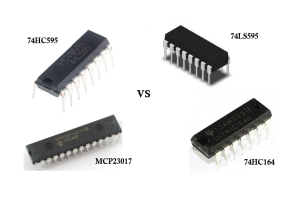
Understanding the Differences Between 74HC595, 74LS595, 74HC164, and MCP23017
on November 14th

Unlocking the ESP12F: Features, Parameters, and Pinout
on November 13th
Popular Posts
-

What is GND in the circuit?
on January 1th 3179
-

RJ-45 Connector Guide: RJ-45 Connector Color Codes, Wiring Schemes, R-J45 Applications, RJ-45 Datasheets
on January 1th 2755
-

Understanding Power Supply Voltages in Electronics VCC, VDD, VEE, VSS, and GND
on November 18th 2437
-

Fiber Connector Types: SC Vs LC And LC Vs MTP
on January 1th 2220
-

Comparison Between DB9 and RS232
on January 1th 1842
-

What Is An LR44 Battery?
Electricity, that ubiquitous force, quietly permeates every aspect of our daily lives, from trivial gadgets to life-threatening medical equipment, it plays a silent role. However, truly grasping this energy, especially how to store and efficiently output it, is no easy task. It is against this background that this article will focus on a type of coin cell battery that may seem insignificant on the...on January 1th 1810
-

Understanding the Fundamentals:Inductance Resistance, andCapacitance
In the intricate dance of electrical engineering, a trio of fundamental elements takes center stage: inductance, resistance, and capacitance. Each bears unique traits that dictate the dynamic rhythms of electronic circuits. Here, we embark on a journey to decipher the complexities of these components, to uncover their distinct roles and practical uses within the vast electrical orchestra. Inductan...on January 1th 1767
-

CR2430 Battery Comprehensive Guide: Specifications, Applications and Comparison to CR2032 Batteries
What is CR2430 battery ?Benefits of CR2430 BatteriesNormCR2430 Battery ApplicationsCR2430 EquivalentCR2430 VS CR2032Battery CR2430 SizeWhat to look for when buying the CR2430 and equivalentsData Sheet PDFFrequently Asked Questions Batteries are the heart of small electronic devices. Among the many types available, coin cells play a crucial role, commonly found in calculators, remote controls, and ...on January 1th 1745
-

What Is RF and Why Do We Use It?
Radio Frequency (RF) technology is a key part of modern wireless communication, enabling data transmission over long distances without physical connections. This article delves into the basics of RF, explaining how electromagnetic radiation (EMR) makes RF communication possible. We will explore the principles of EMR, the creation and control of RF signals, and their wide-ranging uses. The article ...on January 1th 1726
-

Comprehensive guide to hFE in transistors
Transistors are crucial components in modern electronic devices, enabling signal amplification and control. This article delves into the knowledge surrounding hFE, including how to select a transistor's hFE value, how to find hFE, and the gain of different types of transistors. Through our exploration of hFE, we gain a deeper understanding of how transistors work and their role in electronic circu...on November 18th 1717



